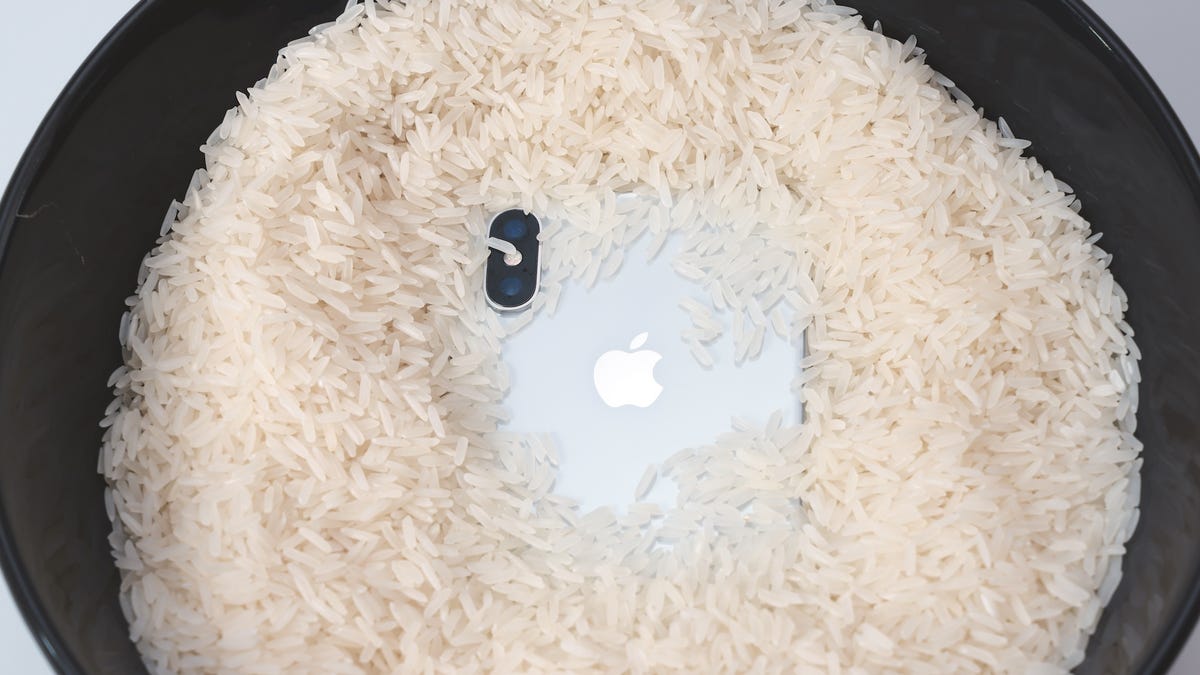Apple Officially Warns Users to Stop Putting Wet iPhones in Rice | The company said the popular remedy could cause “small particles of rice to damage your iPhone.”::The company said the popular remedy could cause “small particles of rice to damage your iPhone.”



So the IP68 ratings are on a scale of 1-9 for dust and water respectively.
So the 6 is for dust and particulates and the 8 is for water.
With a rating of IP68, which is an industry standard, it is actually better at keeping out water then dust and particulates. I have no idea what the deal is with rice particulate, but it’s obviously not great to get into charging ports and the like.
It’s worth noting that Samsung shares the exact same rating and would also struggle with a bowl of rice.
There’s no deal. 6 is the highest level for dust protection. It means “No ingress of dust; complete protection against contact (dust-tight). A vacuum must be applied. Test duration of up to 8 hours based on airflow.” It means an airtight device. There’s no dust protection above that. If water, the molecule, can’t get in or harm a phone, no particle will get in.
EDIT: Just realized I didn’t clear up this point well enough. You got it the other way around. Keeping dust out is easy, water is hard. Because with water you have the factor of pressure defeating seals and leaking in. Something that is less likely to happen with a gas forcing particulates in. There’s no natural atmospheric pressure on earth that could defeat an airtight seal enough to force dust in. But on the contrary, water pressure that can easily crush phones is actually a quite common occurrence. And enough pressure to break seals and leak water in can happen in only a few meters of water submersion.
Atmospheric dust is anything between 0.001 and 40 microns. Typical rice starch (what rice dust is made of) is around 0.5 microns, the smallest it can get is 0.1 micron.
Rice particulates do nothing to phones. Apple just wants people to pay for a new phone or Apple’s overpriced tech service.
ADD: As stated by the article the rice hack doesn’t work anyway, it’s just a meme. But the rice won’t hurt an IP68 phone.
To be fair to Apple, I don’t think they’re referring to rice dust getting past seals. They’re likely referring to bits of rice getting stuck in lightning or USB ports, starch on camera lenses, or a small particle working its way into a button. All of that could be solved by putting the phone in a paper wrapping or envelope and putting that in a real desiccant instead of chucking the phone in a bag of rice.
Starch dirtying up a lens or glass is easily solved with a warm damp cloth, starch is water soluble this way. Rice in a port can easily be dislodged without damage with a pin needle. And no particle is going to get into a button in any way that impedes function or causes harm, that’s kind of the whole point of an IP6x device.
But again, we are talking about the company that made trendy the bendy phone, and the “cracked screen and glass back” aesthetic.